All about thermoses with pump

Thermos is a unique device that can be used at home, in the office, in the country, at various events, and also taken with you on a trip. There are a wide variety of such devices. In this article, we will consider thermoses with a pump, note the features, advantages of the model, the rating of popular brands, as well as ways of caring for such products.
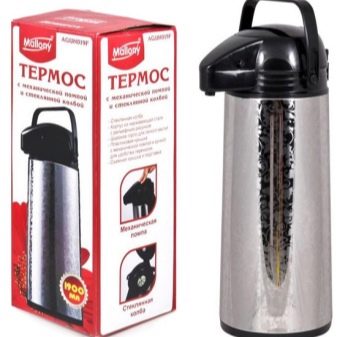

Features of the device
The main task of a thermos is to keep warm or cold. If you pour hot liquid into a container, it should remain hot and cool gradually. This unique device was created by German entrepreneur Reingold Burger in 1903. He took the Dewar vessel as a basis and transformed it.

These were the classic variations of the thermos that need to be opened in order to pour the liquid. But time does not stand still, and all technologies are gradually improving, and this is what happened with the thermos. In order not to open the lid once again, a mechanism was invented, which was later called a pump. It works on the principle of a pump. Directly inside the thermos there is a small tube placed in the flask, and its other end passes through the lid and goes out into a special hole.
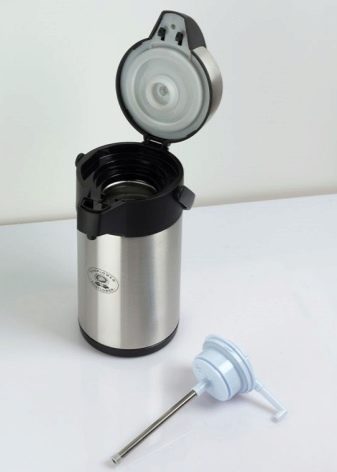

The pump operates in two ways.
-
Water pump. In order to start the mechanism, you need to press a special button that will remove the restriction, then you need to press or push on the pump so that the liquid from the thermos poured out. The number of taps will depend on how much water is needed.
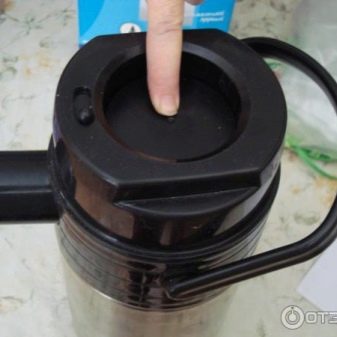
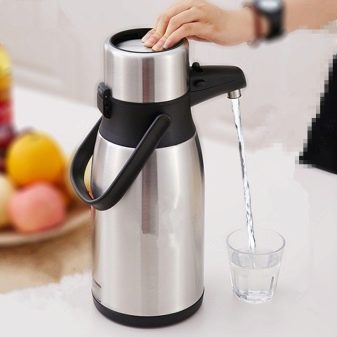
- Pneumatic pump. To unlock the lever, you need to remove the stopper, then press the button or the lever (depending on the model), the liquid will pour into the cup on its own.In expensive models with great functionality, there are special dispensing buttons that are responsible for the portion size.

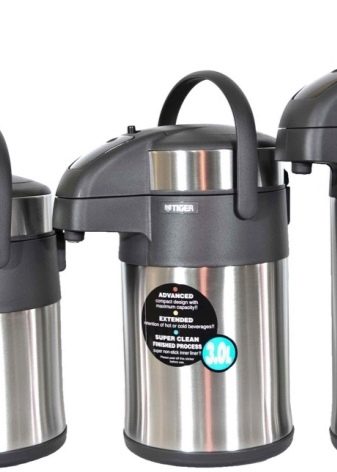
In order for the liquid to stop pouring, all the same manipulations should be carried out only in the opposite direction.
It is also worth noting the positive and negative aspects of this model.
Let's start with the pros.
-
Time. Due to the fact that there is no constant need to open and close the thermos, the liquid inside stays hot longer. On average, such models retain heat for up to 36-40 hours.
-
Volume. Such products have a large capacity and volume, as well as a convenient wide neck for pouring liquid inside.
-
Simple design and convenience. Such models are suitable for use by the elderly and children who, due to their age, cannot constantly unscrew and twist the tight-fitting lid.
-
Presence of a locking leverthat will prevent liquid from spilling out unexpectedly.
-
Due to the pump, the thermos should not be constantly raised and tilted at the required angle.to let the liquid flow.
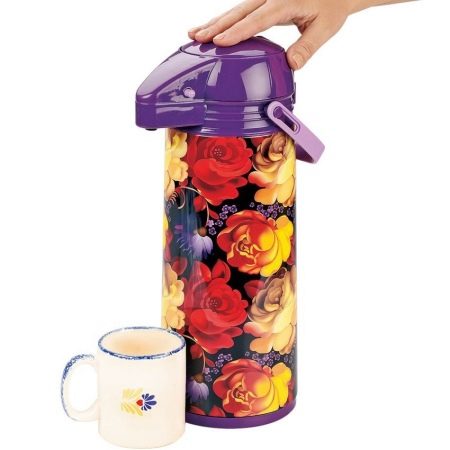
It is worth noting a number of disadvantages.
-
No miniature sizes. Such thermoses are always cumbersome, it is impossible to just put them in a backpack and go. Often, thermoses with a pneumatic pump are stationary.
-
Price. Products with a pump have a much higher price tag than classic models.
-
It's worth keeping an eye on the pump and pump all the time.to prevent clogging.
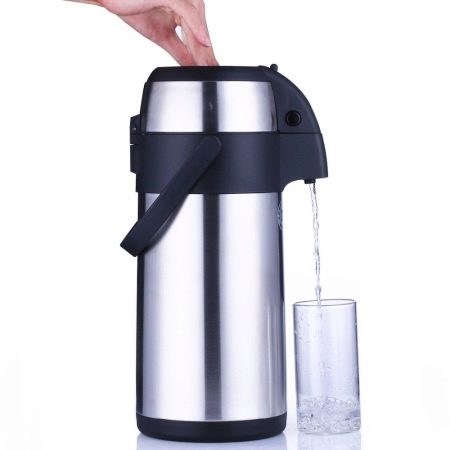
What are they?
Thermoses are usually made of stainless steel - both the body itself and the inside. The metal case is reliable, especially if a thermos with a glass bulb keeps heat well. There is a layer of thermal insulation between the body and the inside.
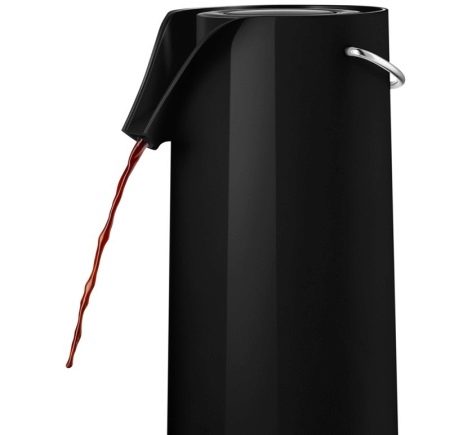
The flask can also be double-walled. A vacuum is created between the walls, which prevents the environment from affecting the products or liquids inside the thermos.
The lid covers the neck and has a low thermal conductivity. On the inside of the cover there is a layer of heat-insulating material.
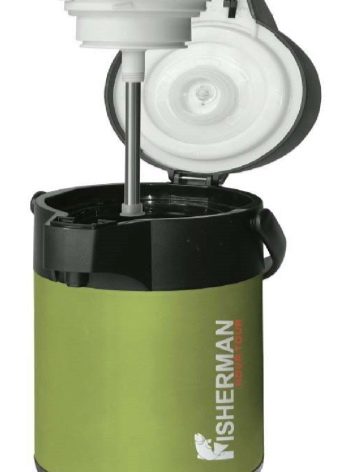
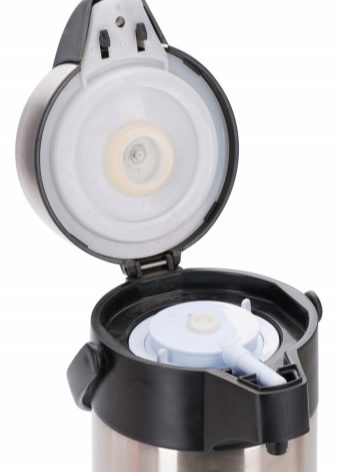
Flask materials vary.
-
Glass. Ideal and optimal for home desktop use. Glass does not absorb odors, washes well and has a long heat storage life. The main disadvantage is fragility.

-
Metal. Travel option. Has increased strength under mechanical stress.

- Plastic. The cheapest option for flasks. Leaves the smell of plastic, the products inside are saturated with this smell. Therefore, it is better to use such thermoses for technical work, for example, to wash your hands or dishes.
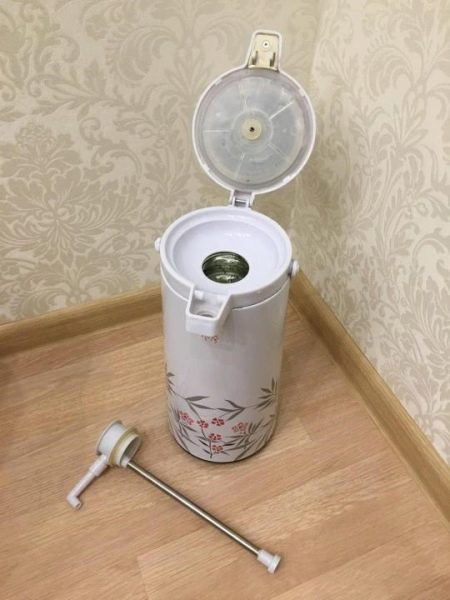
Products with a pump do not need any additional electrical recharge, since the process itself is mechanical. You simply press a button and the liquid pours out, or you periodically press the pump.
Of course, there are also modern models that have built-in batteries for maintaining temperature or heating. But they are most often used for stationary use, they are large, from 5 liters, and in the store they are marked with the inscription "heated".
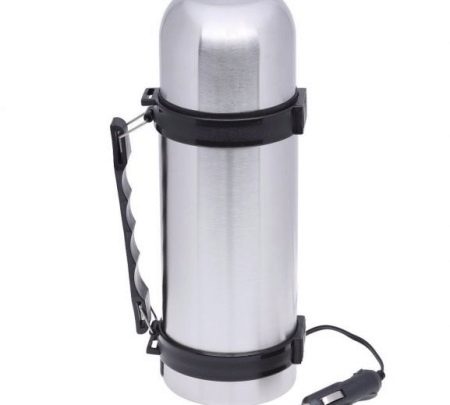
Volume is an important value that consumers pay attention to before buying. It is worth noting that models with a pneumatic pump cannot be less than 2 liters in volume, hand-held thermoses or mug thermoses. Such products suggest that it will be necessary to provide a large number of people with cold or hot water.
Such thermoses are most often chosen for tourist centers somewhere in the mountains or forest. They can be 5 or even 10 liters. This is the best option - the larger the flask, the longer it will keep warm. Equipped with a special thickened carrying handle.
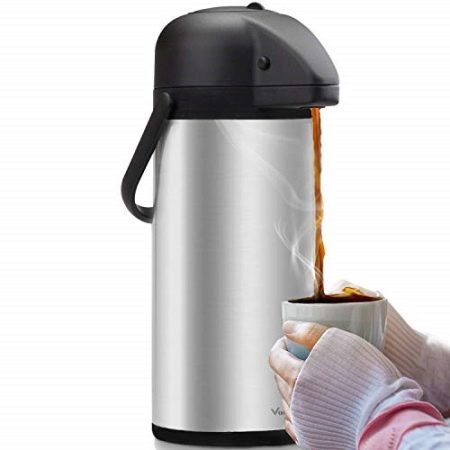
There are thermoses for 2, 3, 4 liters on sale. They are suitable for use in the country, in the office, for places of public catering.

Review of the best models
Consider the rating of the most popular models on the market today.
Sunnex MSS50DB model made in China, it is equipped with a large volume of 5 liters.Long heat retention time, easy to rinse. Of the minuses - an uncomfortable, weak handle and a non-removable pump.

From Japan presented model Tiger TIM-1900 with a volume of only 1.9 liters. Good design, heat retention time up to 12 hours, light weight. Of the minuses - the cost, as well as the fragility due to the glass bulb.

Chinese thermos AXENTIA Airpot with a volume of 1.9 liters, a stainless steel case, an inner flask made of glass (this is also considered its disadvantage), keeps heat for a long time, a good and strong handle.
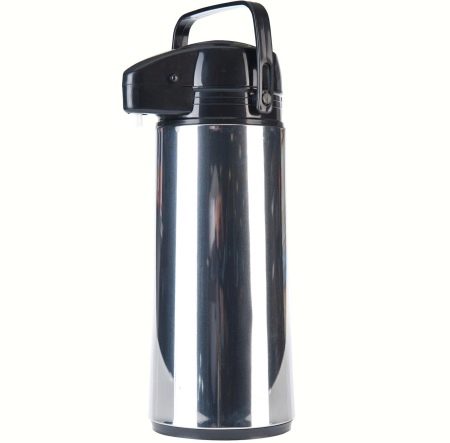
Bartscher, made in Germany. The volume is 5 liters, the material of manufacture is stainless steel, the handle is made of plastic. The uniqueness of the model is that the bottom can be rotated 360 degrees.
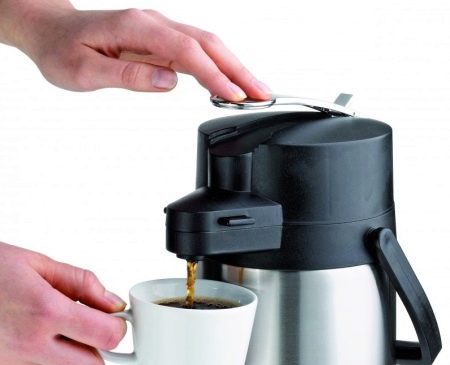
Thermos "Arctic 501-3000" 3 liters, produced in Russia. Massive body, metal frame. Plastic elements for the entire upper structure. Locking lever.

It is in great demand in the domestic market due to its warranty (5 years) and the lack of modern innovative devices.
Selection Tips
Before choosing a thermos with a pump-action principle of operation, you should pay attention to some points. It is necessary to pay attention to the volume, especially if the thermos is chosen for water. The larger the liters, the longer the heat or cold will remain.
Smell. Before purchasing a product, you need to open the lid and sniff. The flask should not have a specific odor. The factory smell will disappear after 5 washes.
Inspect your pump carefully to ensure it runs well without delay or stagnation.
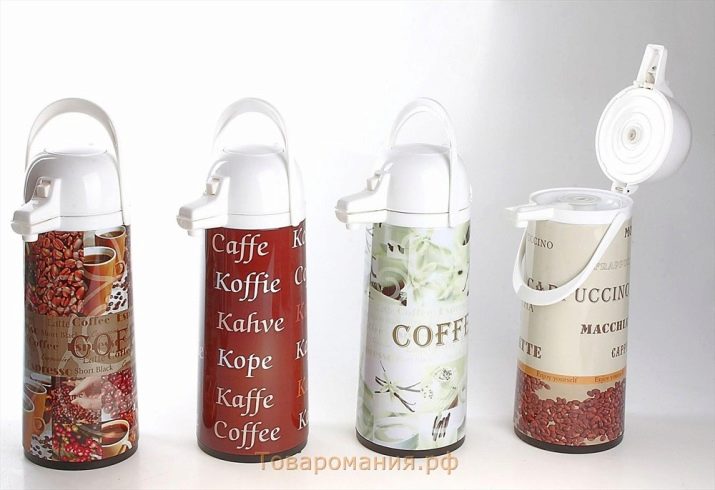
After the purchase, it is worth pouring boiling water into the product and leaving it for a day. If the next day the water temperature drops below 55 degrees, then this thermos does not keep warm at all.
The price of the product will depend on the manufacturer, but you should choose a more reliable and proven brand.
For a long-term thermos service, it is worth choosing models with glass flasks, they can store not only drinks, but also yoghurts; only after using fermented milk products, the pump should be thoroughly rinsed, or better cleaned.
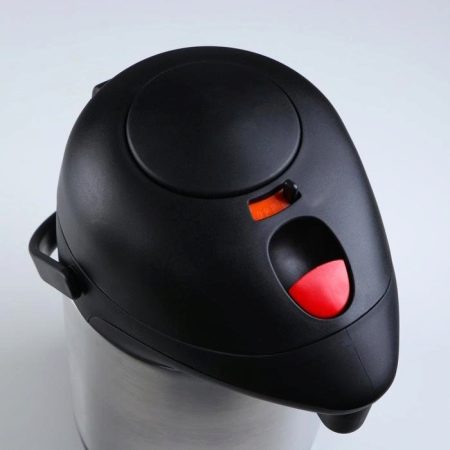
Operating rules
The first thing to know about products with a pump is that you should not pour drinks with gases in them. Carbon dioxide negatively affects the bulb, expanding it, thereby deforming all attached rubber pads.
Do not use an alkaline dish cleaner as it does not rinse well and can settle in the tube.

It is advisable to rinse and clean the pump and pump after each use. Since particles of previous products can settle in the pump: sugar, tea leaves, plaque after fermented milk products. Over time, this will start to rot and ruin the smell and taste of the fluid you consume. In order to get rid of the smell, the pump must be opened and cleaned.
Once every 2 months, it is necessary to completely disassemble the pump with a pump and rinse it in a solution with soda.









